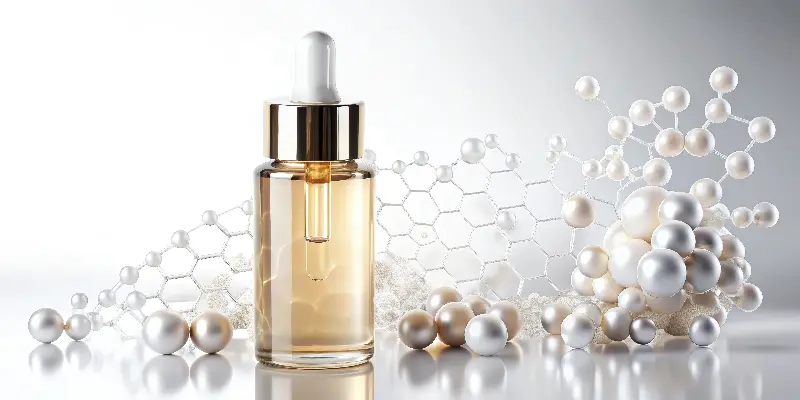The allure of youthful, glowing skin has sparked an ongoing fascination with skincare breakthroughs, and at the heart of the conversation stand retinol and retinoids. Whether you’re gliding on your first night cream or you’ve long been a skincare enthusiast, understanding the science-backed magic of these vitamin A derivatives is key to maximizing your routine. So, what makes retinol and retinoids the gold standard in anti-aging treatments? Let’s reveal their real impact, the myths, and discover practical ways to harness their transformative power.

Retinol vs. Retinoids: The Dynamic Duo Decoded
Retinoids is the umbrella term for all vitamin A derivatives. Among them, retinol is the most well-known and widely available over the counter, while other members (think tretinoin, adapalene, and tazarotene) typically require a prescription for their stronger potency. Don’t let the jargon confuse you: all retinoids work similarly by promoting cell turnover, boosting collagen production, and fading pesky pigmentation. The main difference comes down to strength, speed of results, and skin sensitivity.
Retinol, while less intense than prescription retinoids, is often preferred by beginners and those with sensitive skin because it’s gentler and still delivers visible results. Prescription retinoids, on the other hand, pack a more powerful punch, often speeding up the transformation but with a higher risk of irritation and dryness. No matter which you choose, patience is a must—the real magic emerges with consistent, long-term use.
How Do Retinoids Turn Back the Clock?
It’s not just skincare marketing hype: the science behind retinoids is robust. These molecules penetrate deep into the skin, binding to receptors and basically “training” skin cells to behave as youthful cells should. Retinoids stimulate collagen synthesis, the protein responsible for firmness and elasticity, which natural aging (and UV exposure) inevitably depletes over time. As a result, fine lines and wrinkles soften, creating a plump and more resilient complexion.
But their legendary benefits don’t end there. Retinoids also regulate skin cell turnover, which gently dissolves clogged pores and smooths textured skin. That’s why they’re prized by both teens fighting acne and adults tackling dullness or age spots. In fact, retinoids are among the few anti-aging ingredients with decades of clinical trials to show improvements in skin tone, texture, and luminosity.

Getting Started: How to Introduce Retinol Safely
Diving into retinol or prescription retinoids can feel intimidating, especially with tales of “retinol uglies” circulating beauty circles. The adjustment period, commonly called retinization, sometimes brings dryness, redness, or mild peeling. Here’s the good news: these side effects are temporary and manageable with the right approach.
Start slow and low. If you’ve never used these actives before, try retinol (or retinoid) once or twice weekly, gradually increasing frequency as your skin builds tolerance. Always apply at night, as sunlight can weaken the effectiveness of these ingredients. Pair your nighttime retinoid with a gentle, sulfate-free cleanser and a rich moisturizer to protect the skin barrier. Look for products with supporting ingredients like hyaluronic acid, ceramides, or niacinamide to further reduce irritation.
And sunscreen isn’t just a suggestion—it’s mandatory. Retinoids can make skin more sensitive to the sun, so broad-spectrum SPF 30 or higher is your best daytime companion, rain or shine.
Common Myths and Must-Know Facts
There’s a lot of noise about retinoids, so let’s separate myth from fact. First, they’re not just for teenagers or mature skin—retinoids can benefit men and women of all ages, making them one of the most universal skincare ingredients available. Secondly, they aren’t exclusive to the face; retinoids can improve texture and discoloration on the neck, chest, and even the backs of hands.
Some believe that stronger is always better. In reality, overly potent retinoids can backfire for those with sensitive or reactive skin. It’s far smarter to use a gentle option consistently than to abandon a strong formula due to irritation. Finally, while retinoids deliver visible results, they aren’t instant fixes. Most users notice a brighter, smoother complexion after several weeks, with dramatic improvements in wrinkles and pigmentation appearing after three to six months of uninterrupted use.
Choosing Your Ideal Retinoid Product
The market is brimming with options, so how do you select the right product? First, decide if you want to start with over-the-counter retinol or ask a dermatologist for a stronger prescription. Check the label for encapsulated or slow-release retinol if your skin is on the sensitive side—these versions often cause less irritation. Ensure the product is stored in opaque, airtight packaging to prevent degradation.
If you’re layering other actives like vitamin C, AHAs, or BHAs, consider using them in the morning and retinoids at night, since combining them can increase sensitivity. And remember, a consistent, realistic routine will deliver better results than constantly switching products.
The Bottom Line: Retinoids for Every Age and Gender
Retinoids and retinol are as close to skincare magic as science gets. With consistent use, these vitamin A derivatives visibly transform skin, minimizing the most stubborn signs of aging and restoring youthful radiance. While the adjustment period may require patience and diligence, the rewards—smoother, firmer, and brighter skin—are well worth the wait.
No matter your age, gender, or skin type, there’s a retinoid journey that can fit your needs. The secret is a gradual introduction, unwavering sunscreen use, and the willingness to let results unfold over time. The future of your skin’s youth can start tonight—all it takes is one well-chosen tube.
